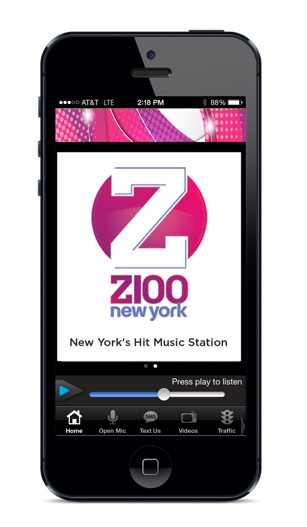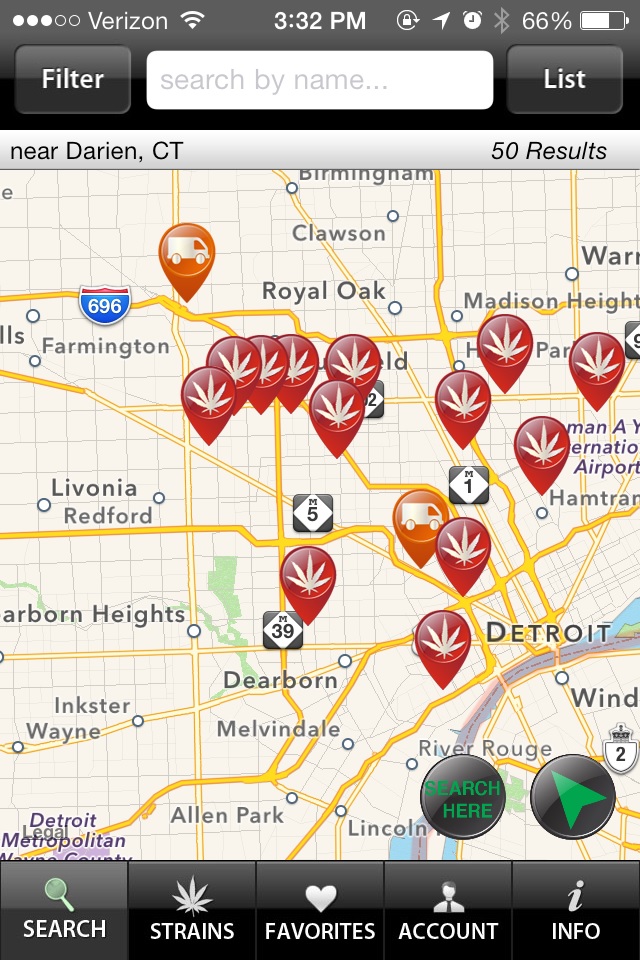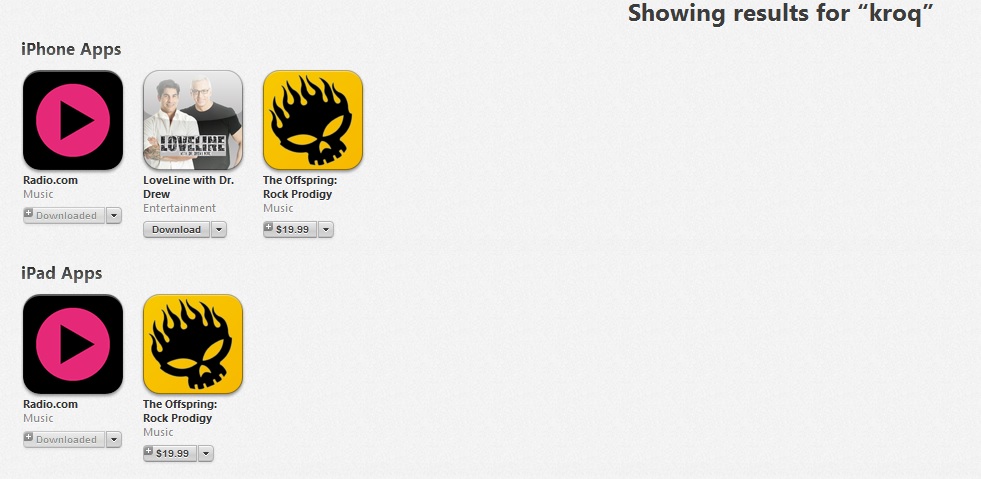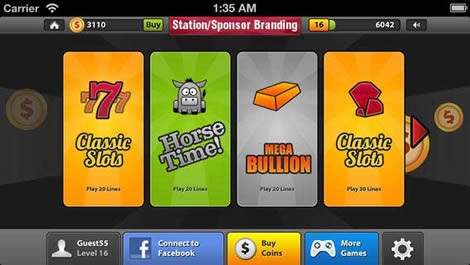Since the launch of jacAPPS in 2008, Paul Jacobs has been at the forefront of the mobile conversation for radio. He has worked with hundreds of stations on their mobile strategies and designs of apps, he’s looked at reams of data, and has been a key presenter on the topic at umpteen conventions and conferences. Today, he takes on a key topic in the mobile space – the optimal way for radio to grow, compete, and innovate with apps. We look forward to your comments. – FJ
of stations on their mobile strategies and designs of apps, he’s looked at reams of data, and has been a key presenter on the topic at umpteen conventions and conferences. Today, he takes on a key topic in the mobile space – the optimal way for radio to grow, compete, and innovate with apps. We look forward to your comments. – FJ
So perhaps today’s blog post title won’t become the mantra that “I want my MTV” did. But maybe inside the radio industry, it should.
When we sat down to draw up the jacAPPS strategy 5+ years ago, we talked about all the different stations, brands, and companies that would be perfect for the mobile space. And of course, our initial thinking and efforts were focused on stations that were already well-branded, with a strong loyal audience, magnetic personalities, and a great track record.
So little did we realize back then that some of the industry’s most famous stations would not have their own mobile apps – on any platform – throughout all these years, even as the radio app movement has exploded. Below is an app that you simply can’t find in the iTunes Store or Google Play Market – no matter how hard you look:
 And if you search for KROQ in the iTunes Store, all you get is this:
And if you search for KROQ in the iTunes Store, all you get is this:
Sure, you can find Z100 inside iHeartRadio, and KROQ is in the Radio.com app, but the question is whether that mobile strategy shortchanges these brands – and their massive audiences. Does it provide a great fan experience? And does it truly take advantage of the revenue generating ability of the mobile space?
The Z100 app pictured here doesn’t exist. It’s a mockup. Great radio brands like Z100, KROQ, KIIS-FM, and WDVE, and WCBS may never have their own apps because their parent companies have deeply invested in the “umbrella app” route.
This creates “scalability,” but what does it do for these brands?
All radio stations, whether it’s the big dogs like KROQ and Z100 or smaller stations you may have never heard of, should have their own mobile app. There is an immense opportunity for radio in the mobile space, well beyond simply providing a stream for programming as well as monetization. And it’s a matter of basic branding.
Since the jacAPPS start-up, we’ve seen it all, from stations that have taken the time to carve out a great mobile plan to those with basic branded apps that essentially just offer up their station stream. But you could make the case that for some of the biggest radio companies, wrapping up their entire mobile strategy in an “umbrella app” that houses hundreds of stations like iHeartRadio or Radio.com shortchanges some of their best brands “Umbrella apps” have their strengths, to be sure, but the mobile opportunity is so much greater.
We don’t have all the answers to mobile questions and challenges. And because this space continues to rapidly change, staying ahead – or keeping up – is a tough assignment.
We do know this: broadcast radio is leaving ginormous sums of money and engagement on the table in the mobile space. You don’t have to attend a Borrell Conference (although you probably should) to take stock of the explosion in mobile revenue. And given radio’s unimpressive revenue growth, you’d think that everyone would be lined up at the mobile trough, trying to get a piece of the action. Anyone who tells you that “flat is the new up” is just making excuses for not taking advantage of the amazing opportunity that is in front of all of us.
More importantly, if you compete against a company with only “umbrella apps,” you’ve got a major leg up. They don’t have a local strategy. They’ve got a corporate strategy. Radio stations in Anchorage, Fort Wayne, or Taos have their own branded apps, and are in a position to reap the benefits. This includes not only having their app icon on the smartphone screen (the best “beachfront property” on the tech planet), but the ability to share additional content (think podcasts and videos), connect with listeners via social media wherever they go, and generate additional revenue by having the flexibility to create multiple solutions for advertisers instead of having to rely on lousy CPMs from banner ads.
So here are a few things that should be on your mobile “to do” list, assuming you’re empowered to have a local mobile app strategy:
1. Put the power of your content into the control of the listener. Let them choose the content they want (stream or on-demand) and give them the ability to share everything. The smartphone is the digital hub of a person’s life. They not only receive content, they spray it everywhere. And as we learned this year in Techsurvey10, the propensity to share digital content goes up every year.
 2. Register your users. Entercom deserves credit for adding an optional registration feature to their apps, and it’s smart. When we release the findings from Techsurvey10, it will be clear listeners are more than willing to provide basic information in exchange for access to your stream. And with this information, a world of opportunity opens up, including targeted advertising and promotions, otherwise known as “mass customization.”
2. Register your users. Entercom deserves credit for adding an optional registration feature to their apps, and it’s smart. When we release the findings from Techsurvey10, it will be clear listeners are more than willing to provide basic information in exchange for access to your stream. And with this information, a world of opportunity opens up, including targeted advertising and promotions, otherwise known as “mass customization.”
3. Leverage your brand and “localness.” While all the “umbrella apps” are essentially limited to station streams, local stations can create outstanding mobile products for hometown users. Why wouldn’t a CHR or Rock station have an entertainment app, complete with listings of every bar and venue (paid, of course), mapping, ticket purchasing, etc.? Or why wouldn’t an AC station create a local restaurant app? A news station could launch a local traffic and weather together app. Last year using geo-location, we built an app that allows consumers to find the closest medical marijuana dispensary. These concepts create new revenue streams, a scalable business, and most importantly, an opportunity to leap ahead of your competition by creating a great mobile experience for your audience as well as a marketing tool to reach new listeners.
4. Start playing games. This category continues to generate the most downloads of any app silo. If you play “Words With Friends” and other mobile games, you know the phenomenon well. Smartphones are techie time killers, allowing us to entertain ourselves in mundane places like the dentist office or the school play. jacAPPS has created a package of station-branded games that can be sold to sponsors, who can be integrated into them. And other developers have similar product lines, designed to help you brand games in the mobile space.
5. Provide mobile solutions for your clients. Many stations sell so-called “integrated” digital packages (web site, email database, etc.) to their clients, but only a few offer the capability to provide a mobile solution. Why? Because it’s not easy and mobile requires not only code, but also support and other gnarly challenges. We are working directly with some agencies as their outsource provider to their clients, and this is something that can be offered to any local station, too. Your clients are struggling with many of these same challenges, so why not help them solve them?
6. Amaze and astound your listeners. Apps are fun, they’re sticky, and when you bake in cool features that only your brand and/or your personalities can provide, you’re well on the road to creating mobile solutions that will help your brand stand out in overcrowded app stores. Over the past five years, we’ve developed everything from trivia features that change when you shake the phone, to an “8 ball feature” that delivers fun messages, to the ability for listeners to record 10-second messages that you can air and they can share. A streaming app is table stakes. Doing something special in mobile challenges us all.
If you have the ability to design your own mobile app, the good news is that given the penetration of Android and iOS (Apple’s operating system), you achieve a reach of well more than 90% of all smartphones in the U.S. This puts broadcast radio in a unique position to stay relevant and to innovate in the hottest space out there.
You have to give Clear Channel, in particular, a lot of credit. They have built an amazing multi-media platform with iHeartRadio, now extending into other sectors of the entertainment industry. On top of that, they have made iHeart Radio a well-known brand, available in more and more dashboards and other outlets. But it’s no stretch to suggest that the addition of individually branded apps for some of their bigger and better stations would be smart, strategic, and could pay even bigger dividends.
But the reverse is also true. If you have your own station app(s), congratulations. Now think about offering your content in different mobile formats like TuneIn or iHeartRadio. Become involved with NextRadio. Create fun, useful apps to help market your station and truly monetize mobile. Isn’t the goal to get your content and brand into as many smartphones as possible? Isn’t that precisely what Tim Westergren has done? Making your content available on a whenever/wherever basis is key, as is continuing to build your brand equity.
So if you work for a company with an “umbrella app” strategy, maybe it’s time for the powers that be to rethink that position in light of what we’ve all learned about mobile and branding over the past five years. Whether you use our mobile app company or seek out another fine developer, great brands deserve their own branded apps. If you are lucky to work for a great radio station, it is more than just a stream – it is personality, video, community involvement, social sharing and engagement, and a whole lot more. An individually branded app just makes sense for the growth and prosperity of radio.
And maybe you can pay down that debt just a little faster.
- For Radio, Will It Be Christmas In April (And Hopefully, May)? - April 21, 2025
- The Revolution Will Not Be Monetized - December 30, 2024
- What Kind Of Team Do You Want To Be? - October 4, 2024






Leave a Reply